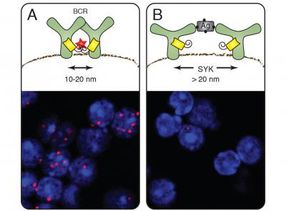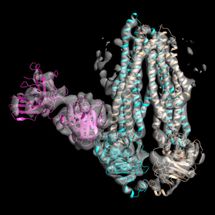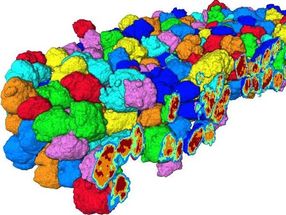How mitochondria get their membranes bent
Research team identified proteins regulating mitochondrial membrane structure
Advertisement
mitochondria are the powerhouses of cells. Underneath their smooth surface they harbor an elaborately folded inner membrane. It holds a multitude of bottleneck like invaginations, which expand into elongated cavities (cristae). The narrow shape of the entrance or pore to the cristae ('crista junction allows separation of the intracristal space and storage of molecules. Cytochrome c, for example, an important signaling protein in programmed cell death (apoptosis), is stored in this compartment. When apoptosis is triggered, the pores enlarge and cytochrome c is released into the cytosol. Thus, understanding of how the pore diameter and the shape of the inner membrane are regulated on a molecular basis is of great relevance to a better understanding of mitochondrial function in general. Recently, in cooperation with other research teams, the group of Prof. Andreas Reichert, who has been appointed as professor for Mitochondrial biology to the Goethe University within the Cluster of Excellence Macromolecular Complexes in 2007, has identified two proteins linked in an antagonistic manner that are relevant for governing inner membrane structure.
Soubannier et al. report on their quest of slow-growing baker`s yeast mutants harboring deformed mitochondria. Thereby, they discovered the protein Fcj1 ("Formation of criasta junction protein 1"), which is embedded in the inner membrane and accumulates at crista junctions. Upon increased expression of Fcj1 the number of cristae junctions goes up. Without the protein, however, crista junctions are lacking and the inner cristae membrane forms internal parallel stacks of vesicles.
On the other hand, the researchers found that regular assemblies (supercomplexes) of the F1FO-ATPase, a protein complex required for supplying the cell's energy, accumulated at the cristae tips but were less abundant at crista junctions. In addition, Fcj1 and the F1FO-ATPase appear to have opposing functions. In fact, Fcj1 reduces the formation of F1FO-supercomplexes. "We hypothesize, Fcj1 makes sure that the membrane can adopt a negative curvature, while the F1FO-ATPase supercomplex induces positive bending", Andreas Reichert interprets the results. "This is highly exciting, as we have for the first time found out how mitochondrial ultrastructure is regulated and which components determine the structure of crista junctions at all."
Original publication: Rabl, R., Soubannier, V., Scholz, R., Vogel, F., Mendl, N., Vasiljev-Neumeyer, A., Körner, C., Jagasia, R., Keil, T., Baumeister, W., Cyrklaff, M., Neupert, W., and Reichert, A.S. ; "Formation of cristae and crista junctions in mitochondria depends on antagonism between Fcj1 and Su e/g."; J Cell Biol, 2009.






















































